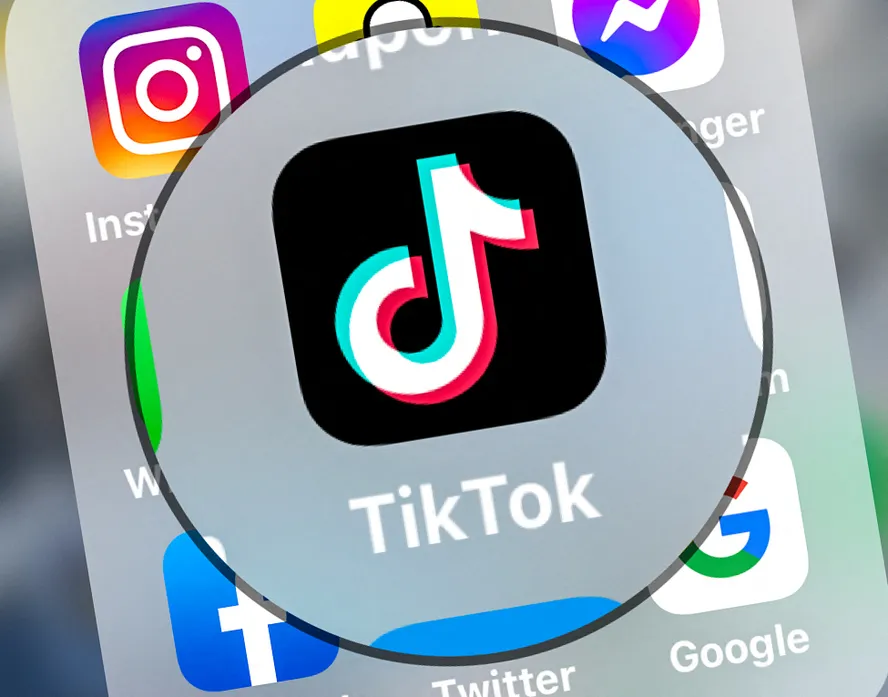A study reveals a significant shift in Generation Z’s behavior: they are moving away from Google and increasingly turning to TikTok for their searches. This trend reflects not only a transformation in how people access information but also a new approach to blending entertainment with quick data retrieval.
Previously, Google reigned supreme as the go-to search engine. However, for Generation Z, born between 1996 and 2010, this reality is changing rapidly.
According to research conducted by YPulse and reported by Axios, only 46% of individuals aged 18 to 24 start their searches on Google. This number rises to 58% among those aged 25 to 39.

MaryLeigh Bliss, YPulse’s content director, notes that social media has evolved from mere social interaction platforms into true highways of information.
The study reveals that 21% of young people now begin their searches directly on TikTok, while only 5% opt for YouTube. This suggests a significant shift in online search habits, with Generation Z increasingly turning to social media platforms to meet their information needs.
Isabela Soller, CEO of the Soller Group and an expert in content creator management, attributes this shift partly to the desire for convenience. With its recent updates, TikTok is becoming an increasingly robust search platform, offering users the ability to search and consume content in one place.
Soller highlights TikTok’s improvements in its search mechanisms, which now even include excerpts from Wikipedia directly within the app. This not only simplifies the search process but also encourages users to integrate research into the environment where they are already immersed, consuming content continuously.
TikTok is emerging as a strong competitor to Google, positioning itself as a new search hub for a generation hungry for content and instant information. This phenomenon is not surprising, as over the past 30 years, we have witnessed the rise and fall of various social networks, from the days of MSN, MySpace, and Orkut.
Currently, the dominant app is TikTok, which already boasts a community of over 1 billion users. According to recent data from Adobe, about 2 in 5 Americans turn to TikTok as their preferred search engine.
Issaaf Karhawi, a digital communication researcher at USP, views this shift as the result of a “captivity” strategy employed by Big Techs. According to her, these platforms are designed to keep users engaged by offering everything they need in a single environment.
TikTok stands out for its unique features, such as trending search terms in the comment section and the ability to find specific content with ease. These functionalities differentiate TikTok not only from other social networks like Instagram but also from Google itself.
According to Adobe, consumers turn to TikTok for a variety of content, ranging from recipes and music to DIY tutorials and fashion tips. This trend is especially prominent among Generation Z, with 64% of its members in the U.S. using TikTok as their primary search engine, compared to 49% of millennials.
The USP specialist points out that this preference arises because algorithms personalize both content and searches, making the experience more tailored to each user.
According to the study, one in ten Generation Z members trusts TikTok more than Google as a search engine, reflecting the effectiveness of algorithms in providing relevant and engaging results.
Short videos, a hallmark of TikTok, are one of the main attractions for Generation Z. This preference is due to the format’s ability to condense information quickly, creating a sense of accelerated consumption. This dynamic is particularly appealing to young people, who can consume more content in less time. Unsurprisingly, this also proves more lucrative for companies, which can insert ads more effectively.
The influence of business models extends beyond entertainment, also shaping how young people search for and consume information. TikTok not only provides entertainment but also becomes a reliable source of data and knowledge for a generation increasingly connected and eager for information.
Marina Abud, a psychologist and psychoanalyst specializing in the study of virtuality’s effects on contemporary individuals, highlights that viewing dynamic content—compared to static images or written material—makes information more accessible to individuals.
She describes this experience as akin to connecting with someone through the screen, creating a sense of closeness and intimacy, much like a friend telling a story. This intense emotional connection can increase engagement with content and the perceived intimacy with the creator.
However, Abud and other specialists warn about some negative aspects of this process. The creation of information bubbles, where users are exposed only to perspectives similar to their own, can limit the diversity of viewpoints and information. Additionally, the constant comparison with others and the decreasing patience for in-depth research are growing concerns.
Abud points out that many people are struggling to concentrate on activities requiring prolonged attention, such as finishing a book or attending a lecture. Constant exposure to fast-paced and engaging stimuli can make it challenging to focus on a single task for extended periods.
These insights highlight the complex interaction between technology and human psychology in the digital age. While dynamic content consumption can create a sense of closeness and intimacy, it also brings significant challenges, such as attention fragmentation and difficulties in engaging with deeper, more reflective activities.
As we navigate this new digital landscape, it is crucial to recognize these dilemmas and find ways to balance technology use with our mental health and well-being. This may involve developing strategies to limit time spent on social media platforms, raising awareness of technology’s effects on our cognition, and cultivating mindfulness techniques to help us reconnect with ourselves and the world around us.
By doing so, we can maximize the opportunities that technology offers while mitigating its negative impacts, allowing us to thrive in an ever-evolving digital world.

